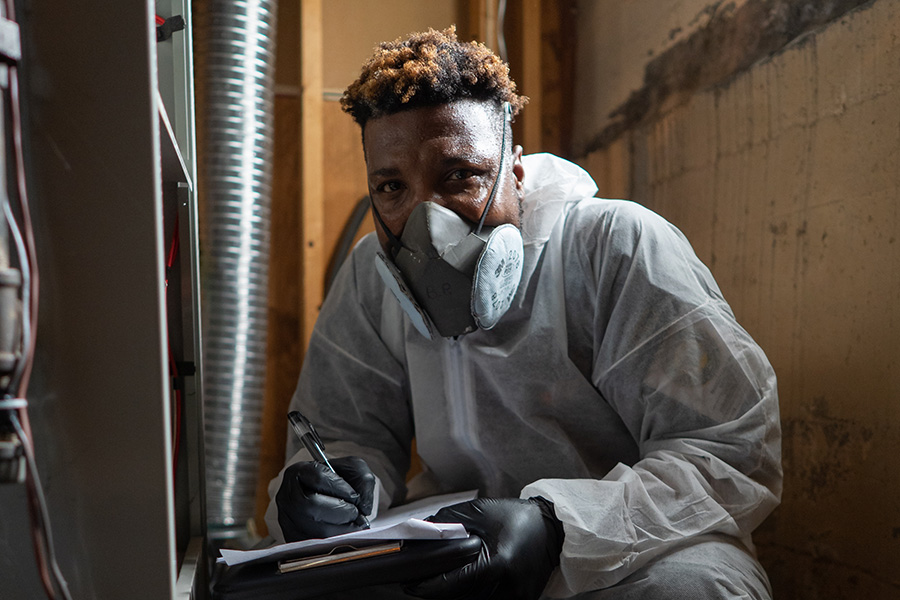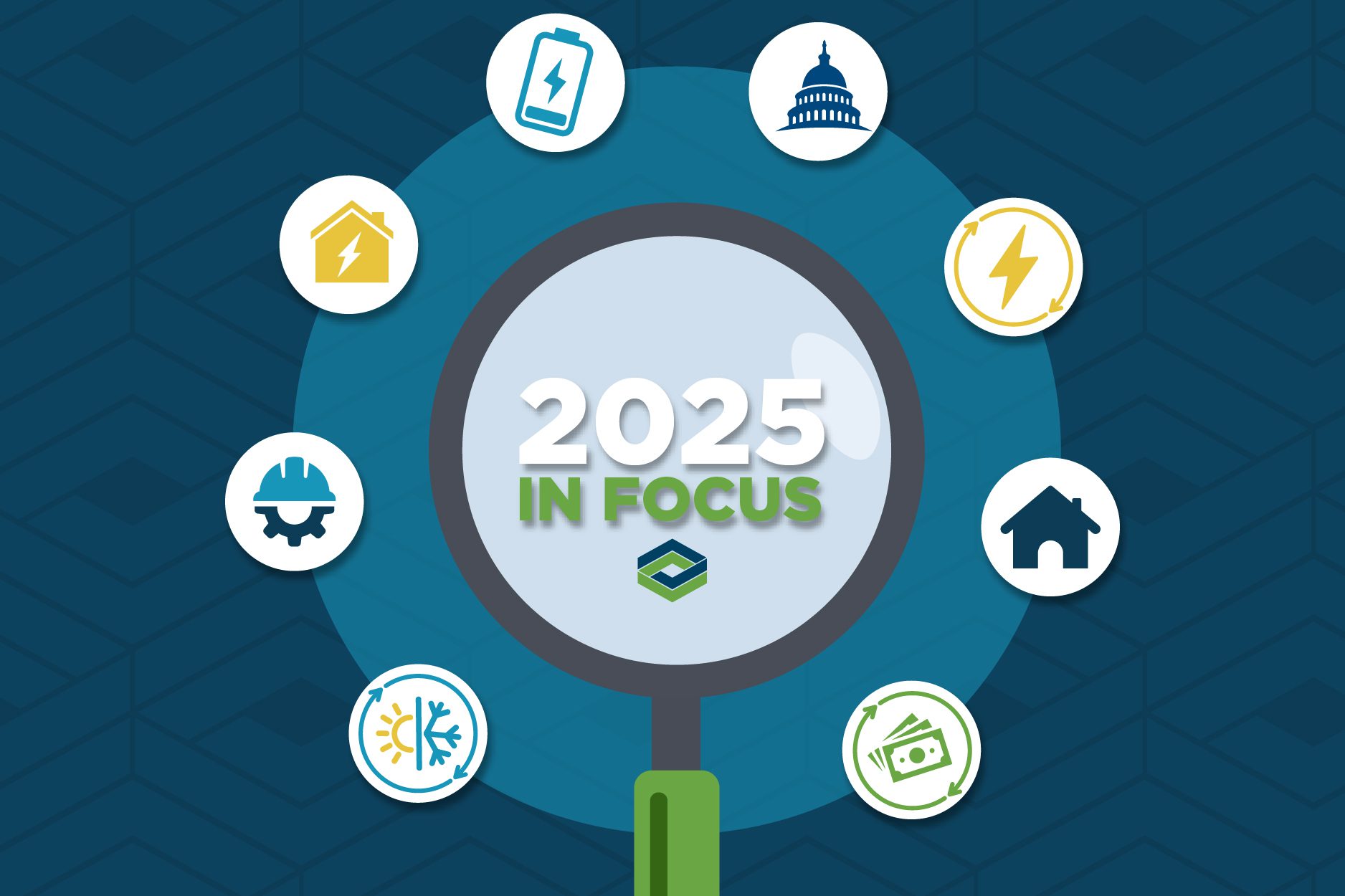Nov 11, 2020
Workforce Development – An Ongoing Conversation
Retention, resources, assessment, a career map, and more are what workforce development looks like in the energy efficiency/building performance industry.
By: Macie Melendez

As part the Building Performance Association’s Midwest Regional Education Series that took place October 21 and 22 of 2020, panelists Ameedah Hafeez and Darnell Johnson (of Urban Efficiency Group, LLC) and Karl Stanley (of NiSource) covered the very important topic of workforce development during their presentation, Workforce Development Townhall – Telling the Energy Efficiency Story.
So what does workforce development look like in the energy efficiency/building performance industry? I wanted to know more, so I followed up with townhall panelists Johnson and Stanley.
Retention
“In order to keep folks in this space, our greatest success has been in changing the conversation from job-focused to career-focused,” says Johnson. “Yes, you are in the attic or crawl space today but that’s because you are just getting started.” Stanley echoes this sentiment: “I think the most important and most successful practice in keeping team members is if you provide a path for progression within a respective field. When team members feel like they are making progress in gathering knowledge and feeling recognized for their work, they are much more likely to stay for longer periods.”
That’s really no surprise though—people generally work to live, not the other way around. Which explains why people are motivated by companies who value them as people and not just employees. Johnson’s company, Urban Efficiency Group, LLC is a Chicago-based, minority-owned utility implementation contractor and community sustainability design firm. “It’s so important to provide a continuum of care when it comes to individual development,” says Johnson. “Not just on the job, but development of what it takes to be successful in life.” Some of Urban Efficiency Group’s team has been there for nearly a decade and he attributes that to the fact that the organization has a commitment to them as human beings.
A lot of Urban Efficiency Group’s focus lies in energy equity and diversity. Johnson says this has developed over time. “It started with our own internal culture as a minority company, and understanding our demographics is a big part of that. We have an emphasis on equity and diversity.”
“We have [employees] that go through a lot personally to get to work every day. They live amidst challenges and we need them to understand that if they stick with this, they will increase their quality of life,” says Johnson. Therefore, his advice to other business owners in the energy efficiency industry can be traced back to his own successes. “Our employee retention comes down to two things: providing visibility for forward momentum and humanizing the workforce,” he says.
Resources
All of this leads to the question: What do business owners and managers need for ongoing training and development in the energy industry? The answer among these panelists is clear: a defined path. “The industry association can be used to define the path and also the steps along the way,” says Stanley. “We need a road map,” says Johnson. Developmental tools, on-demand trainings, and resources that new employees can find in one place. While we do have industry certifications, they tend to be for those who are well into their careers. “As we’re bringing new people in, is there training that can be developed to lead them in?” asks Johnson.
As a company owner, Johnson also thinks the industry would benefit by leveling the playing field and offering all of the various regulations and standards in one place. Specifically, an online platform that’s affordable and accessible to all energy efficiency companies. “My company is at a moderate level,” he explains. “We’re not the small company that started yesterday, but we’re not the big guy either. That’s a tough spot to be in.” Johnson thinks the industry would benefit from a road map here, too. Something that shows company owners how to level up. “Capacity building toolboxes would help guide companies from level to level. If you want to move from a start up to a moderate level, these are the things that you have. If you want to compete at the highest level, these are the things you need to do.”
He makes the point that if we’ve got a goal post that keeps moving, how can any company make it to the end zone? “We need a standard that’s implemented for our industry. A trajectory road map that guides a company from sub to prime status. BPI has this for contractors, but we need additional industry classifications.”
Assessment
All of this got me thinking. Energy auditors and raters do a great job of assessing homes before doing energy upgrades, but do the companies they work for do a great job of assessing employees before hiring them? This isn’t an easy question to answer, and it’s got a lot of facets, but I asked it anyway.
“Assessing employees prior to hiring them is important but also extremely challenging to do,” says Stanley. “With the limited time that most companies have in terms of assessing applicants, this becomes a highly valued skill in terms of being able to assess talent quickly.”
“Absolutely,” says Johnson. “If we’re going to emphasize testing in and out of homes, we should be spending and investing more time in assessing the folks that we are hiring. But not do more in an effort to disqualify a person. Do more to have a better understanding of what the expectations are and what an unconscious bias is. We need to be assessing the processes we’re using to vet people. They are skewed, dated, and need to be revised.” Johnson is referring to equity in workforce development and how these conversations have been sparked as of late—even though his company has been working hard at achieving equity since its inception.
“Now we’re starting to have these conversations, but I do feel like it’s transactional,” Johnson says. “Workforce development has to be transformative, and transformation doesn’t happen through transactions. [The industry] needs to invest in this.”
In other words, equity needs to be a cornerstone of the conversation. If we’re going to standardize the process for contractors and company owners alike, then we need to ensure that everyone has equal access to our tools, resources, road maps, and contracting opportunities. “If we want more people here, we have to identify the resources and make them accessible,” Johnson concludes.
Workforce Development Initiative
Workforce development issues consistently ranks as a top concern for BPA members and industry partners. Contractors need access to better-trained workers. Workers need better access to training to grow their careers. And managers need access to training and development to improve their ability to grow their companies and to incorporate new technology and concepts into their business models.
Categorically, workforce development is challenged by issues of awareness, access, and affordability. Potential workers lack awareness of career opportunities in home performance, HVAC, and weatherization jobs. Training organizations cite issues in obtaining participant’s time for completing course work. Trainees face issues of affordability in terms of both the cost of training and certifications, as well as the time to complete courses. Managers indicate deep concerns about not only attracting new hires but retaining them for sustained employment.
BPA, with funding from the Department of Energy (DOE) and Pacific Northwest National Laboratory (PNNL) is preparing a workforce development (WFD) Needs Assessment, which will ultimately inform a WFD Education Plan designed to increase the flow of new workers as well as retain and upskill current workers in the residential retrofit home performance industry.
This WFD project is in its early stages. The goal is to offer transformative industry resources to support and expand the residential retrofit professions, which BPA will be doing with an interactive online workforce development hub inclusive of training and career guidance. The hub is set to launch by early 2021.
Career Map
Additionally, through a recent three-year grant from the U.S. Department of Energy Building Technologies Office, the Interstate Renewable Energy Council (IREC) and its partners will develop an interactive career map that highlights the breadth of rewarding career opportunities in the energy efficiency sectors.
Key partners in the project include BPA, Building Performance Institute (BPI), the National Community Action Partnership (CAP), the National Institute of Building Sciences (NIBS) and the Home Builders Institute (HBI). With this resource, the partners will conduct extensive outreach to reach a large audience of diverse stakeholders and foster a talent pipeline that is inclusive of low-income and other vulnerable populations.
“As the trades serving the residential sector continue to age and retire, there is a strong need to bring in a new generation of talent and provide them with the skills and vision they need to chart a successful career,” says Larry Zarker, CEO of BPI. “The old paradigm of a person adding skills sets until they ‘know more than their boss’ and abruptly leaving to set up their own shop without any of the skillsets needed to run a successful business is a recipe for failure. IREC’s career map will help people identify the lattice work of skills they will need to build a successful career path.”
In cooperation with industry subject matter experts, the project team will identify critical, market-valued energy efficiency occupations and career paths to develop the career map. From there, a nationwide outreach campaign with partner and stakeholder organizations will promote careers in energy efficiency, leveraging the map through conferences, websites, newsletters, email and social media networks. This outreach will include organizations serving low-income and other vulnerable populations of learners and workers, such as women and minorities, to raise awareness of energy efficiency career options and increase diversity in this important sector.
In the energy efficiency space, we often celebrate things that have perceived value such as titles, certifications, and years of experience. But it’s time we looked beyond perceptions at something deeper, something transformative. “[In this industry], there’s very little celebration for folks that look like me,” says Johnson. “And folks like me have a lot to share about how we can make this space better.” It’s about time we listen.
Learn more
BPA wants to hear from you; email us with your ideas, needs, priorities and/or questions pertaining to workforce development at WFD@building-performance.org.






